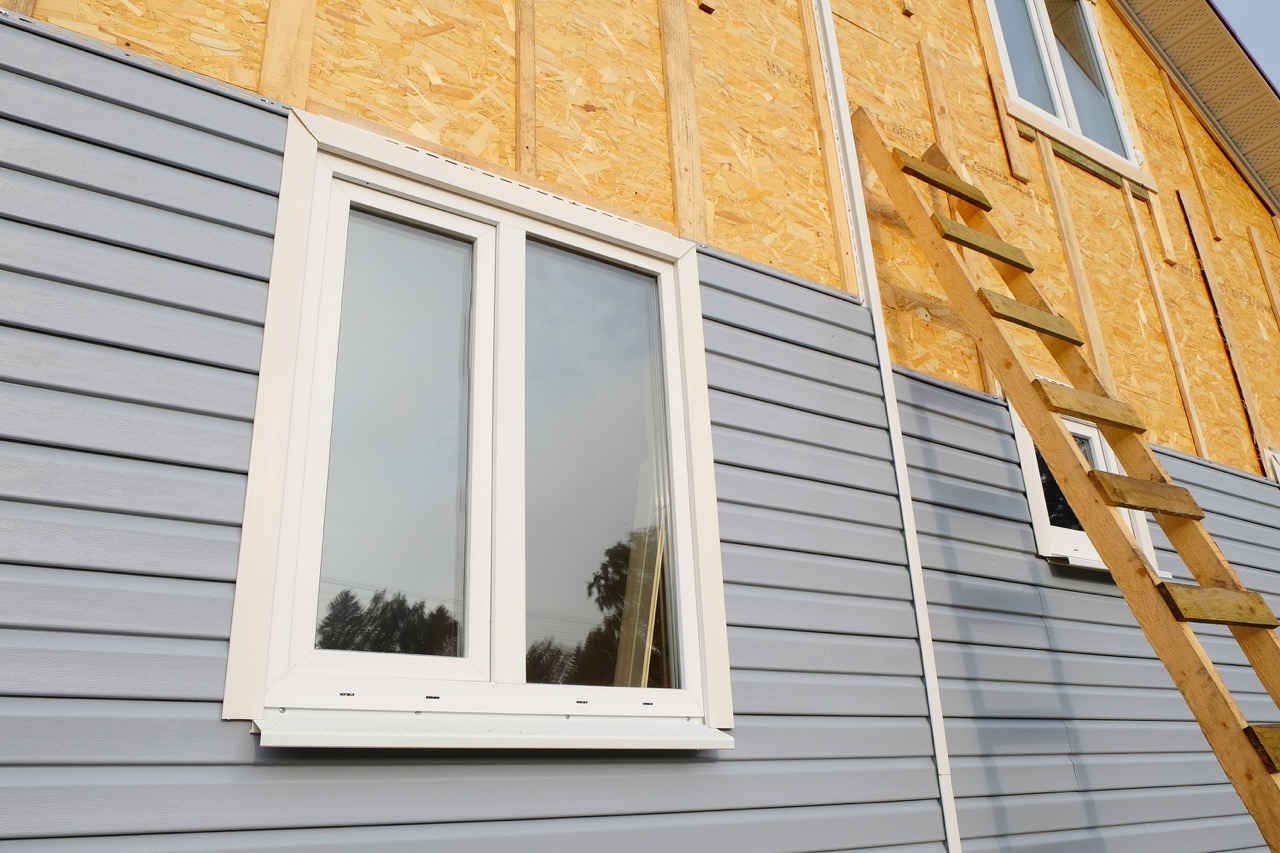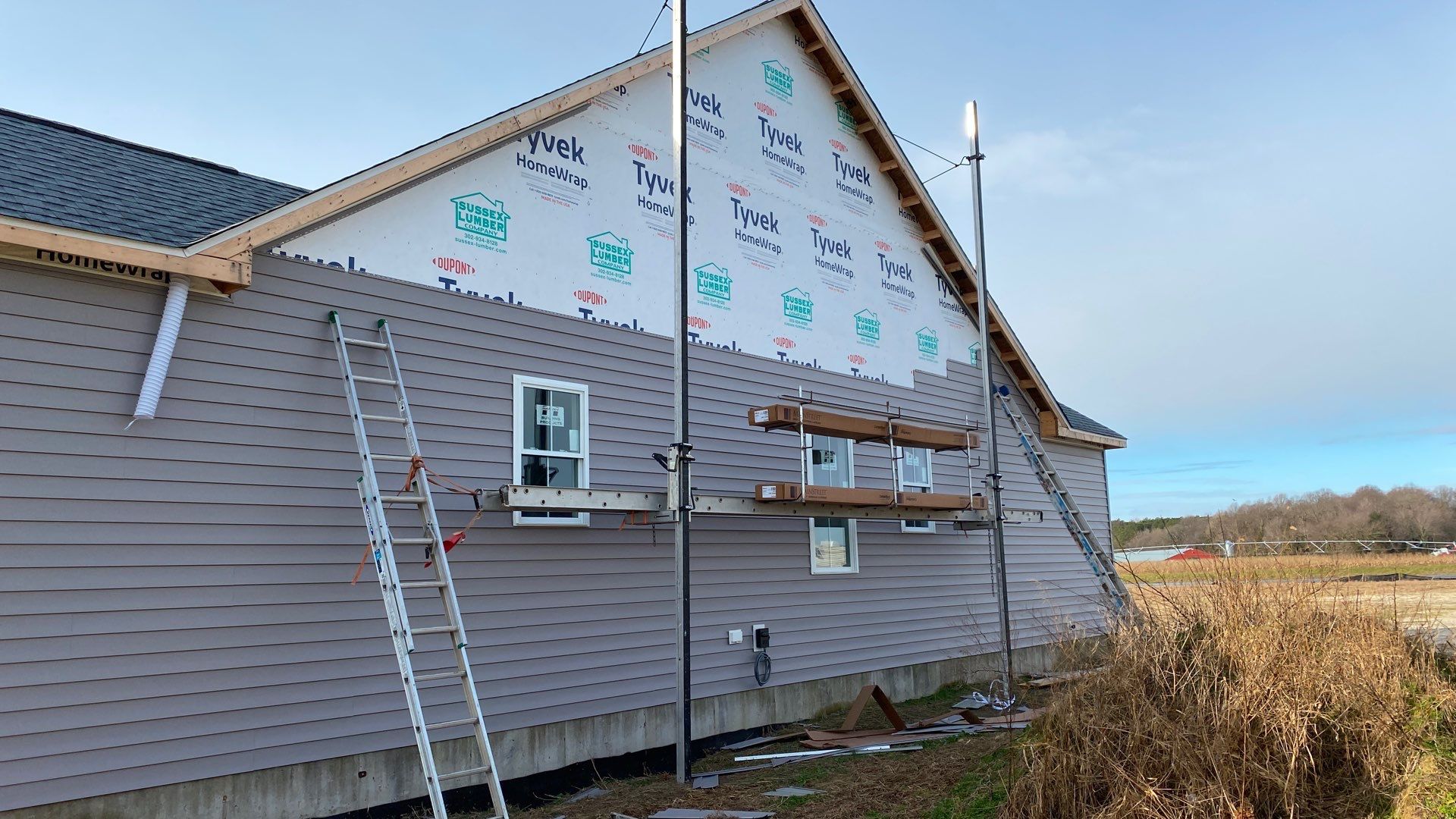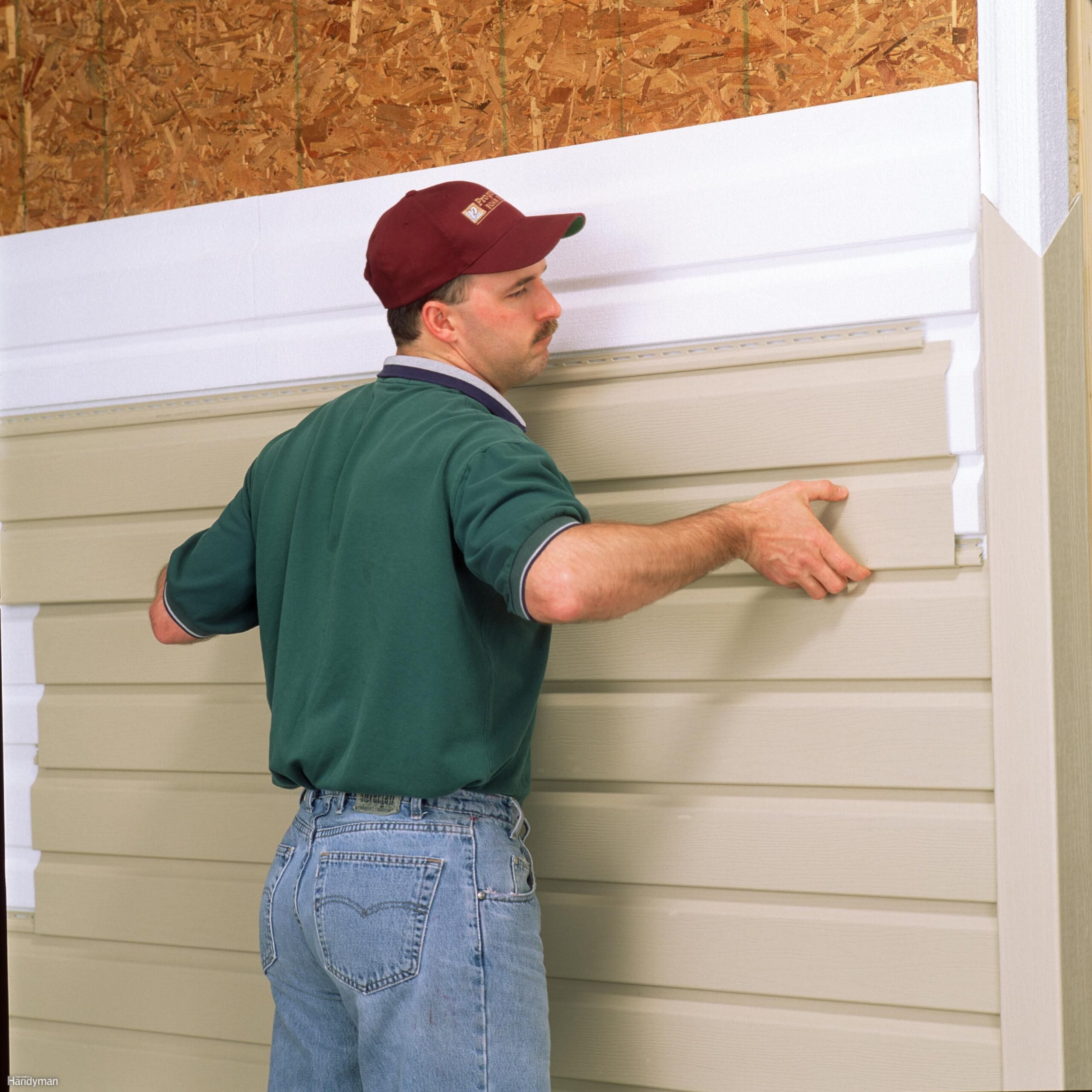Energy-efficient Insulated Siding: A Homeowners Guide
Energy-efficient insulated siding is revolutionizing home construction and renovation. It’s not just about aesthetics; it’s about significantly reducing energy bills, boosting home comfort, and minimizing your environmental footprint. This guide dives into the details of this innovative siding, exploring its benefits, installation, maintenance, and long-term value proposition. We’ll examine various insulation materials, cost comparisons, and help you choose the perfect siding for your home.
From understanding the different types of insulation used to calculating potential energy savings and navigating the installation process, we’ll equip you with the knowledge to make an informed decision. We’ll also discuss the environmental impact and sustainability aspects of choosing energy-efficient insulated siding, allowing you to contribute to a greener future while enhancing your home’s value and comfort.
Introduction to Energy-Efficient Insulated Siding
Energy-efficient insulated siding is a type of exterior cladding that incorporates a layer of insulation directly within its construction. This differs from traditional siding, which requires separate installation of insulation beneath the siding itself. The components typically include an outer facing material (e.g., vinyl, fiber cement, or engineered wood), an insulating core, and sometimes a moisture barrier.
Using energy-efficient insulated siding offers significant advantages over traditional siding. Primarily, it leads to improved home energy efficiency by reducing heat transfer through the walls. This results in lower heating and cooling costs, a smaller carbon footprint, and increased home comfort. Furthermore, the integrated insulation can simplify installation, potentially reducing labor costs and construction time compared to installing traditional siding and separate insulation. The added insulation can also enhance soundproofing, reducing noise penetration from the outside.
Insulation Materials in Energy-Efficient Siding
Several insulation materials are commonly used in energy-efficient siding. Each material offers a unique balance of R-value (thermal resistance), cost, durability, and lifespan. Choosing the right material depends on factors such as climate, budget, and aesthetic preferences.
| Insulation Material | R-value (per inch) | Cost (relative) | Durability | Lifespan (years) |
|---|---|---|---|---|
| Polyisocyanurate (Polyiso) Foam | 6-8 | Medium-High | High; resistant to moisture and insects | 30+ |
| Expanded Polystyrene (EPS) Foam | 3-4 | Low | Medium; susceptible to some damage from impact | 20-30 |
| Extruded Polystyrene (XPS) Foam | 4-7 | Medium | High; more moisture-resistant than EPS | 25-40 |
| Mineral Wool (Fiberglass or Rock Wool) | 3-4 | Medium | High; fire-resistant and sound-dampening | 30+ |
Energy Savings and Cost Analysis
Energy-efficient insulated siding offers significant long-term cost savings by reducing your home’s energy consumption. This translates to lower heating and cooling bills, ultimately increasing the value of your property. Let’s delve into the specifics of these savings and the factors affecting your return on investment.
Potential Energy Savings
The energy savings realized from insulated siding depend on several factors, including the climate, the existing insulation levels of your home, and the R-value of the siding itself. Higher R-values indicate better insulation. For example, a home in a colder climate with poor insulation might see a substantially larger reduction in heating costs compared to a home in a milder climate with already good insulation. A typical scenario could involve a reduction in heating and cooling costs of 15-25%, depending on these variables. Let’s consider a hypothetical example: A homeowner with annual heating and cooling bills of $2000 might see a reduction of $300-$500 annually after installing energy-efficient insulated siding.
Return on Investment (ROI) Factors
Several factors influence the ROI of energy-efficient insulated siding. The initial cost of the siding and installation is a major factor, as is the R-value of the chosen product. Higher R-values generally lead to greater energy savings, but also a higher upfront cost. The climate also plays a significant role; homes in colder or hotter climates will experience more substantial energy savings, leading to a faster ROI. The lifespan of the siding is another key factor; a longer lifespan means the cost savings are spread over a more extended period. Finally, government incentives or rebates available in certain regions can significantly improve the ROI.
Sample Cost Breakdown
Let’s compare the initial investment of energy-efficient insulated siding versus traditional vinyl siding for a 2000 sq ft home.
| Item | Energy-Efficient Insulated Siding | Traditional Vinyl Siding |
|---|---|---|
| Materials | $10,000 | $6,000 |
| Installation | $5,000 | $3,000 |
| Total Cost | $15,000 | $9,000 |
This example shows a $6,000 higher initial investment for the energy-efficient option. However, assuming annual energy savings of $500, the additional cost would be recouped within 12 years ($6000/$500 = 12 years). This doesn’t account for potential increases in energy costs over time, which would further improve the ROI. It is crucial to obtain precise quotes from local contractors for accurate cost estimates. Note that these figures are estimates and can vary significantly depending on location, material choices, and labor costs.
Installation and Maintenance
Getting energy-efficient insulated siding installed correctly is crucial for maximizing its benefits. Proper installation ensures a long lifespan, optimal energy savings, and a beautiful, weather-resistant exterior. Maintenance, while relatively straightforward, is equally important to preserve the siding’s performance and aesthetic appeal over time.
The installation process for energy-efficient insulated siding generally follows a set of steps, though specific details may vary depending on the chosen product and the complexity of the project. It’s always best to consult the manufacturer’s instructions and potentially hire experienced professionals for a smooth and successful installation.
Typical Installation Process
A successful installation involves several key steps, ensuring proper preparation, precise fitting, and a durable finish. Ignoring any of these steps could compromise the siding’s performance and longevity.
- Preparation: This includes removing old siding, repairing any underlying damage to the house’s exterior sheathing, and ensuring the wall surface is clean and dry. This foundational step is critical for a secure and long-lasting installation.
- Framing and Sheathing: For new construction or significant renovations, proper framing and sheathing are essential to provide a solid base for the siding. This step ensures structural integrity and a flat surface for the siding installation.
- Installation of Starter Strips: These provide a level base for the first row of siding panels, ensuring a straight and aligned installation. Using a level during this step is vital for a professional-looking finish.
- Panel Installation: Panels are typically installed horizontally, overlapping each other according to the manufacturer’s specifications. Accurate measurement and cutting are crucial to avoid gaps and ensure a tight seal.
- Fastening: Panels are secured using appropriate fasteners, ensuring they are properly attached without damaging the siding. Over-fastening can cause cracking, while under-fastening can lead to loose panels.
- Finishing: This includes installing trim pieces, corner pieces, and J-channels to complete the look and provide a finished, professional appearance. Paying attention to detail in this phase greatly enhances the overall aesthetic appeal.
Maintenance Best Practices
Regular maintenance is key to preserving the energy efficiency and longevity of your insulated siding. A proactive approach can prevent costly repairs and extend the life of your investment significantly.
- Regular Cleaning: Washing the siding with a mild detergent and water at least once a year removes dirt, grime, and other debris, maintaining its appearance and preventing the buildup of contaminants.
- Inspect for Damage: Regular inspections help identify any signs of damage early on, such as cracks, loose panels, or insect infestation. Addressing minor issues promptly prevents them from becoming major problems.
- Caulk and Sealant: Check and reapply caulk and sealant around windows, doors, and other penetrations as needed. This prevents water infiltration and maintains the building’s energy efficiency.
- Trim Maintenance: Regularly inspect and maintain the trim pieces around windows and doors to ensure they are properly sealed and prevent water damage.
Potential Installation Problems and Solutions
While installation is generally straightforward, several issues can arise. Recognizing these potential problems and knowing how to address them can save time, money, and frustration.
| Problem | Solution |
|---|---|
| Improper Panel Alignment | Carefully check alignment during installation using a level and adjust as needed. Re-installation of misaligned panels may be necessary. |
| Water Infiltration | Ensure proper sealing around windows, doors, and other penetrations. Address any gaps or cracks immediately. |
| Fastener Issues (Over- or Under-fastening) | Follow manufacturer’s instructions for fastener type and placement. Replace any improperly installed fasteners. |
| Damage During Installation | Handle panels carefully to avoid scratches or dents. Replace damaged panels immediately. |
Environmental Impact and Sustainability
Energy-efficient insulated siding offers significant environmental advantages compared to traditional siding materials. By improving a building’s thermal performance, it directly contributes to reduced energy consumption and, consequently, lower greenhouse gas emissions. This section explores the specific environmental benefits and compares it to other options.
The primary environmental benefit stems from reduced energy consumption for heating and cooling. Insulated siding acts as a thermal barrier, minimizing heat transfer between the interior and exterior of a building. This reduces the reliance on fossil fuel-powered heating and cooling systems, leading to a decrease in carbon emissions associated with electricity generation or natural gas combustion. For example, a home retrofitted with energy-efficient insulated siding might see a 15-20% reduction in heating and cooling costs, translating directly into a comparable reduction in its carbon footprint.
Reduced Carbon Emissions from Energy-Efficient Siding
The lower energy consumption resulting from improved insulation translates directly into a reduction of carbon dioxide (CO2) emissions. The magnitude of this reduction depends on several factors, including the size of the building, the climate, and the type of energy used for heating and cooling. However, even a modest reduction in energy use across many buildings can contribute significantly to mitigating climate change. Consider a city with thousands of homes; a collective reduction in CO2 emissions from improved insulation could have a substantial positive impact on local and global air quality.
Comparison with Traditional Siding Options
Traditional siding materials, such as vinyl or wood, offer little to no insulation value. This necessitates higher energy consumption to maintain comfortable indoor temperatures. Energy-efficient insulated siding, on the other hand, incorporates insulation directly into the siding panel, significantly reducing heat transfer. The environmental impact of manufacturing these traditional materials also differs. Vinyl siding, for example, is a petroleum-based product with a significant carbon footprint associated with its production and transportation. Wood siding, while a renewable resource, often requires significant processing and transportation, also impacting the environment. In contrast, some energy-efficient insulated siding options utilize recycled materials, further reducing their environmental impact.
Recycled Content and Sustainability Certifications
Many manufacturers of energy-efficient insulated siding are incorporating recycled content into their products. This can include recycled plastics or other materials, reducing the demand for virgin resources and minimizing waste. Furthermore, some manufacturers seek and obtain sustainability certifications, such as LEED (Leadership in Energy and Environmental Design) points, demonstrating their commitment to environmental responsibility. These certifications provide independent verification of the product’s environmental attributes, allowing consumers to make informed choices. The presence of recycled content and sustainability certifications indicates a lower environmental burden compared to traditional siding options.
Choosing the Right Energy-Efficient Insulated Siding
Picking the perfect energy-efficient insulated siding can feel overwhelming, but understanding your needs and options simplifies the process. This section guides you through selecting siding that complements your home’s style, suits your climate, and delivers maximum energy savings. We’ll explore various styles, colors, and key factors to ensure you make an informed decision.
The right siding choice significantly impacts your home’s energy efficiency and curb appeal. Consider your climate – a colder climate will benefit from higher R-value siding, while warmer climates might prioritize reflectivity. Your home’s architectural style should also influence your selection; a modern home might suit sleek vinyl siding, while a traditional home might look better with wood-like composite options. Finally, remember that color affects heat absorption; darker colors absorb more heat than lighter colors.
Siding Styles and Colors
The market offers a diverse range of energy-efficient insulated siding styles and colors. Vinyl siding remains a popular choice due to its affordability and low maintenance. It comes in various styles mimicking wood, brick, or stone, offering flexibility for different architectural styles. Fiber cement siding is a durable, fire-resistant option that can be painted in numerous colors, allowing for greater customization. Engineered wood siding provides a natural look, but requires more maintenance than vinyl. Each material boasts a spectrum of colors; lighter colors generally reflect more sunlight, reducing heat absorption and cooling costs, particularly beneficial in warmer climates. For instance, a light gray or beige vinyl siding might be ideal for a sunny southern home, while a darker color might be preferable in a cooler northern climate where the goal is to absorb more heat.
Key Factors to Consider When Selecting Energy-Efficient Insulated Siding
Several crucial factors influence the effectiveness and suitability of energy-efficient insulated siding. Careful consideration of these aspects ensures a long-lasting, energy-saving investment. Prioritizing these factors will lead to a more informed decision that optimizes both energy efficiency and aesthetic appeal.
- R-Value: This measures the siding’s resistance to heat flow. Higher R-values indicate better insulation, leading to lower energy bills. For example, siding with an R-value of 4 or higher is generally considered energy-efficient.
- Material: Different materials offer varying levels of durability, maintenance requirements, and aesthetic appeal. Vinyl is low-maintenance and affordable, while fiber cement is more durable but requires more upkeep. Wood alternatives offer a natural look but need regular maintenance.
- Climate: Homes in colder climates need higher R-value siding to minimize heat loss, while those in warmer climates might benefit from siding with high reflectivity to reduce heat gain. For instance, a home in Alaska might require siding with an R-value of 6 or higher, whereas a home in Florida might prioritize a lighter color with a high solar reflectance index.
- Cost: Siding costs vary significantly depending on material, style, and installation. Factor in the initial cost and long-term energy savings when comparing options. A more expensive, high-R-value siding might pay for itself over time through reduced energy bills.
- Home Style: Choose siding that complements your home’s architectural style. Consider the overall aesthetic and how the siding will integrate with other exterior features like windows and roofing.
- Maintenance: Different siding materials require varying levels of maintenance. Vinyl siding generally needs minimal care, while wood or composite siding might require regular cleaning and painting.
- Warranty: A good warranty protects your investment and ensures the manufacturer stands behind their product’s quality and performance. Check for warranties covering both materials and labor.
Visual Representation of Energy Efficiency
Understanding how insulated siding reduces heat transfer is crucial to appreciating its energy-saving benefits. The following visual representations will illustrate the key principles behind its effectiveness, highlighting the role of air gaps and insulation layers in minimizing energy loss.
Imagine two cross-sections of a wall: one with standard siding and one with energy-efficient insulated siding. The standard siding example shows a relatively thin layer of material directly against the exterior wall. Heat readily transfers through this thin layer, leading to significant energy loss in both winter and summer. In contrast, the energy-efficient insulated siding demonstrates a multi-layered system. The outer layer provides protection from the elements, while an air gap acts as a barrier, significantly reducing the rate of heat transfer through convection. This air gap is followed by a layer of insulation, which further impedes heat flow through conduction. The combination of these three elements—outer layer, air gap, and insulation—creates a significant thermal barrier.
Comparison of Thermal Performance
A detailed illustration would show a clear difference in thermal performance. The standard siding illustration would depict a significant flow of heat, represented by numerous arrows passing readily through the siding and into the wall. In contrast, the energy-efficient insulated siding illustration would show a drastically reduced heat flow, with only a few arrows depicted, illustrating the insulation’s effectiveness. This visual could also incorporate numerical data, such as R-values, to quantify the difference in thermal resistance. For instance, standard vinyl siding might have an R-value of around 0.05, while insulated vinyl siding could have an R-value of 4 or higher. This difference visually demonstrates the superior insulation capabilities of the energy-efficient option, leading to significantly lower energy consumption.
Impact of Proper Installation
Proper installation is critical for maximizing the energy efficiency of insulated siding. A visual representation could show two scenarios: one with correctly installed siding, and one with improper installation. In the correct installation, the illustration would show a seamless and airtight fit between the siding panels and around windows and doors, minimizing gaps and air infiltration. The insulation layer would be shown consistently thick and properly placed. The incorrect installation illustration would show gaps, poorly sealed joints, and inconsistent insulation thickness, highlighting how these imperfections create pathways for heat transfer, diminishing the overall effectiveness of the siding. This visual comparison effectively demonstrates the importance of professional installation in achieving optimal energy savings.
Final Thoughts
Ultimately, investing in energy-efficient insulated siding is a smart move for both your wallet and the planet. The initial investment pays for itself over time through lower energy bills, increased home comfort, and reduced environmental impact. By carefully considering the factors discussed – insulation type, installation, and long-term maintenance – you can transform your home into a more energy-efficient and sustainable haven. This guide has provided a comprehensive overview to help you make the best choice for your needs.









